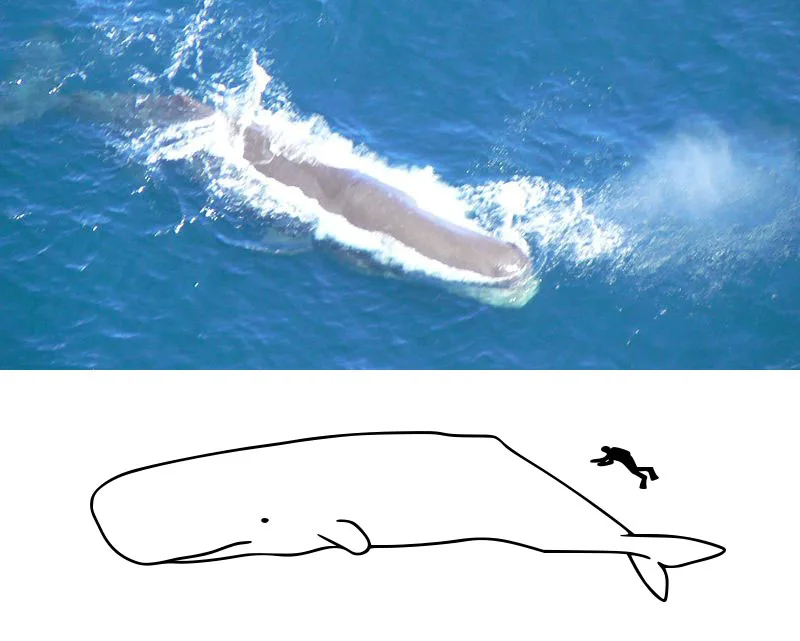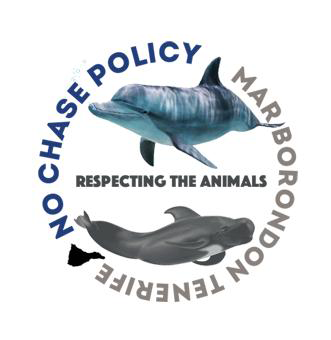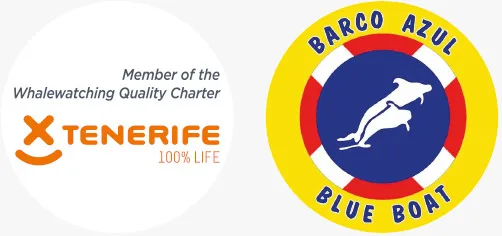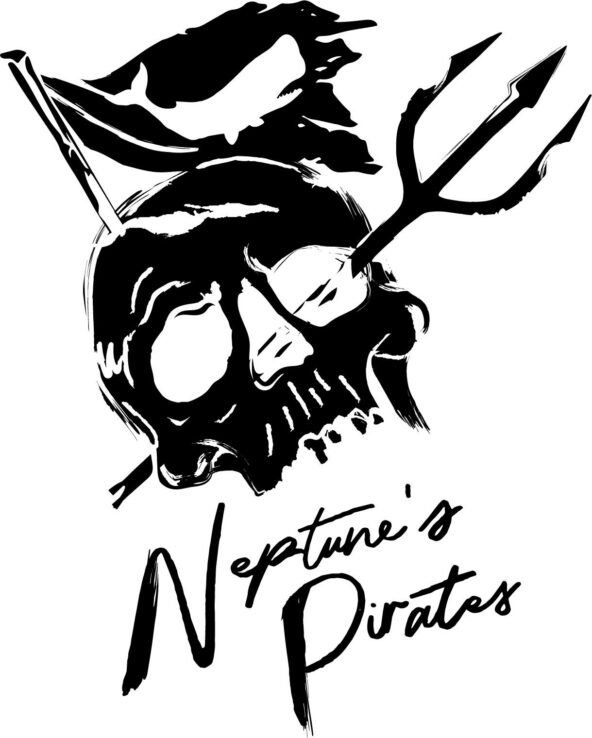WHALES & DOLPHINS LIVING IN THE SOUTH-WEST COAST OF TENERIFE
The Southern coast of Tenerife is a privileged place in the world oceans for whale & dolphin watching in their own home environment. The reason being is that Tenerife is home to resident Short Finned Pilot Whales and also Bottlenose dolphins. The South Coast also forms part of the migration for another 21 different species of whales and dolphins, including the Blue Whale to the Orcas.
Not only cetaceans can be seen, but also sea birds such as the yellow footed Seagull, the protected Shearwater and in some parts eagles.
Turtles such as the Loggerhead, and the Green Sea turtle can also be seen at certain times of the year.
From your cruise with us you will also be able to see the breathtaking views of the coast and also the unforgettable Mount Teide, it all looks so different from a sea view.
Whilst doing your tour, our company promises to adhere to the below rules and regulations of whale watching,
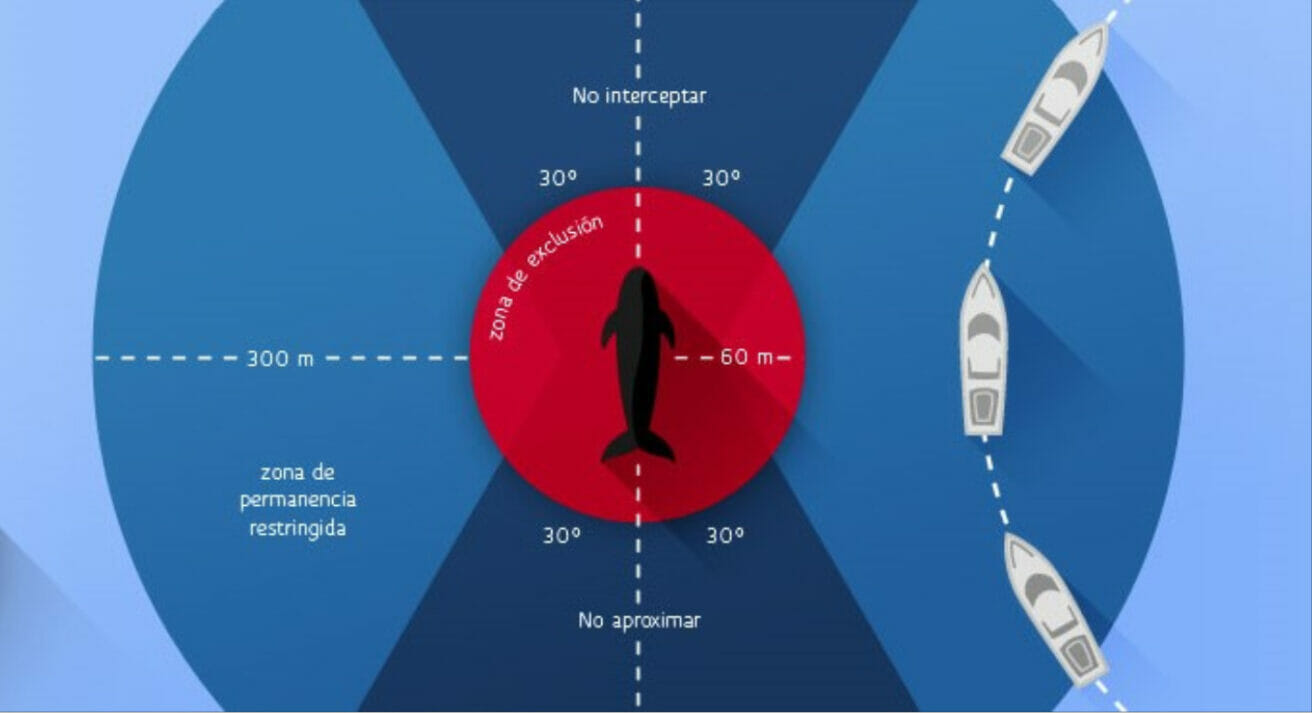
There are various national and international rules and laws that protect populations of pilot whales and dolphins. It is therefore important to be careful with any human activity that might affect these magnificent beasts, including whale and dolphin watching.
The following rules must be observed during out this activity:
ALWAYS
• Keep a distance of at least 60 metres.
• Observe the maximum watching time of 30 minutes.
• Sail at slow speeds.
• Avoid concentrations of boats.
• Leave the area if the animals are being disturbed.
NEVER
• Swim with the animals.
• Feed them.
• Touch them.
• Throw any waste into the sea.
• Make noises that might disturb them.
To sensibly whale watch you have to respect these animals and it is extremely important not to disturb them. The Bahriyeli has a very strict no chase policy also.
Our company is the only one in the whole of Spain to make regular donations to Sea Shepherd UK, as we believe you cannot keep taking from the sea, you also have to give back.
Our company is also attached to the “Carta Sostenibilidad” of Tenerife, and is fully licenced for this activity, also holding the special permission from the Government of Spain to be able to whale watch completely legally.
Pilot whales and bottlenose dolphins have settled off the south west coast of Tenerife and have become permanent inhabitants: the food supply, which is abundant, the tranquil waters, the good climate and quality of crystal-clear waters , have created a paradise and ideal setting for theses marine mammals.

Did you know…?
The south west coast of Tenerife is the largest breeding area of this species in Europe
SHORT-FINNED PILOT WHALE
(Globicephala macrorhynchus)
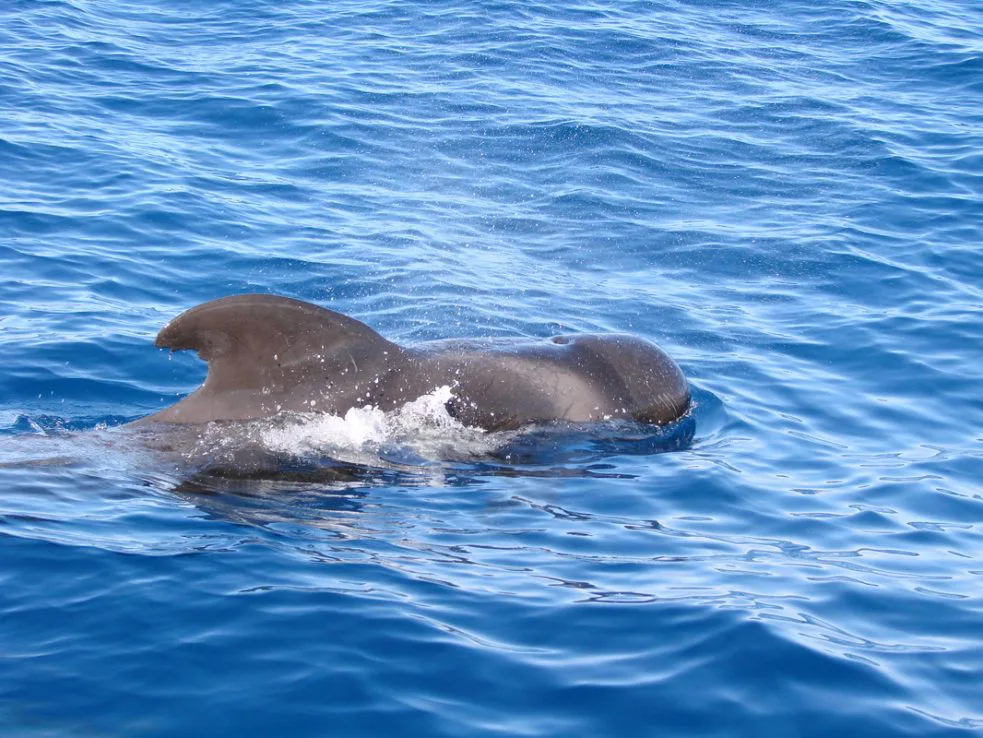
Also known as pilot whales, this species is part of the oceanic dolphin family, and they are odontocete; adult males can exceed 5 metres in length and can weigh between 1 and 2 tonnes.
They are easily identifiable: dorsal fin has a wide base and is set forward on the whale´s back, curved towards the tail. The bulbous head is globe-shaped head and ends in a very slight beak. The colour is very dark, nearly black. This species is the most frequently sighted during whale watching, they are very sociable, with a strong sense of family or groups.
Did you know…? Its scientific “Globicephala” refers to its globe-shaped head.
BOTTLENOSE DOLPHINS
(Tursiops truncatus)
In Tenerife, it is a resident species as we can find them quite easily throughout the year at a short distance from the coast. The average size of the adult males is 2.7 metres, whereas adult females can measure up to 2.5 metres. Large and robust, bottlenose dolphins can live for more than 30 years and weigh over 500 kg. They live in groups of up to 10-30 members, with males separated from the females and calves. They are generally dark grey on the back end present lighter shades of grey fading to white on the lower jaw and belly.
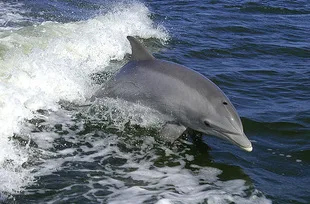
SHORT-BEAKED COMMON DOLPHIN
(Delphinus delphis)
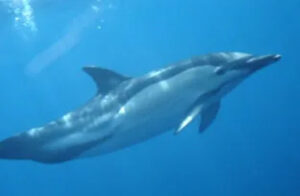
In Tenerife it is possible to see this type of dolphin throughout the year, but mostly in the winter season. Their behaviour among boats is active and playful, s they enjoy bow-riding boats to surf and leap.
Weight: 80-130 kg. Size: up to 2.5 metres.
Did you know…?
They are the fastest swimmers among cetaceans, being able to swim at a speed of nearly 45 km/h
SPERM WHALE
(Physeter macrocephalus)
It is the largest of toothed cetaceans and can be easily mistaken for a Great Whale as it is similar in size. Highlights of its anatomy are its gigantic head, dark knobbly skin and a small hump, similar to a dorsal fin. It feeds on giant squid found 2.000 metres below sea level.
Weight: 15-60 tonnes. Size: 11-18 metres.
Did you know…?
It can have up to 50 teeth.
